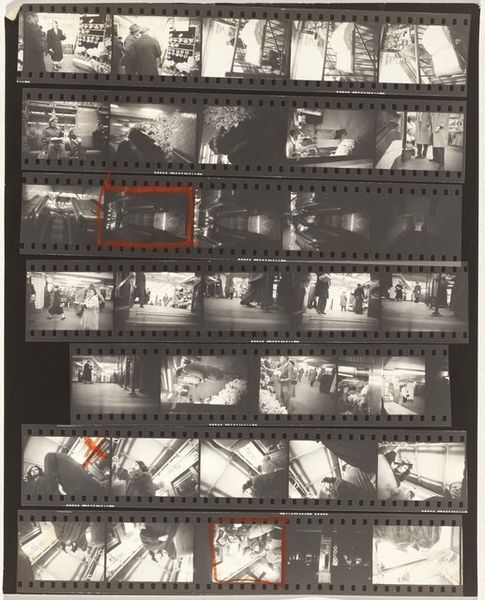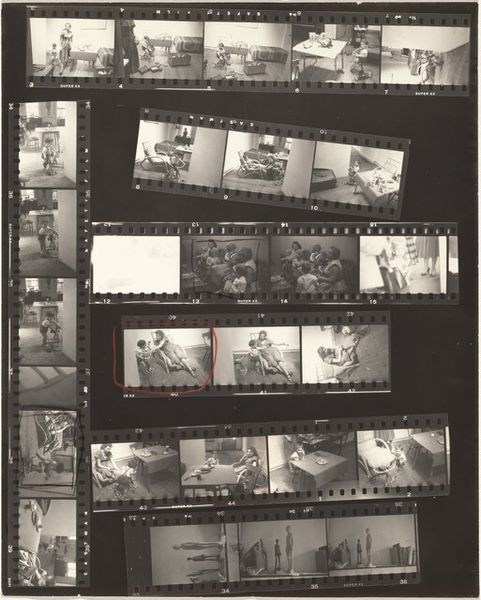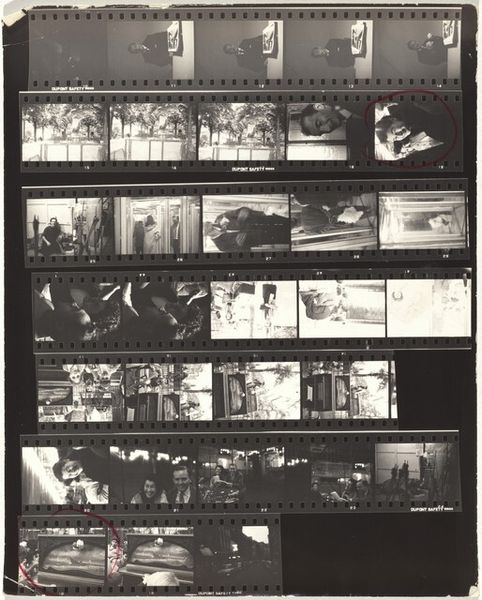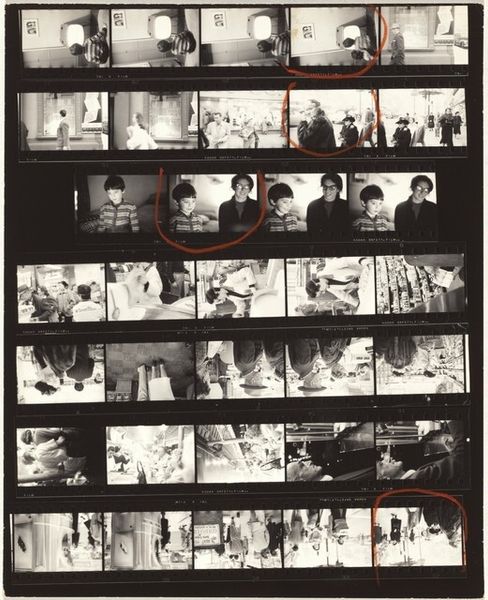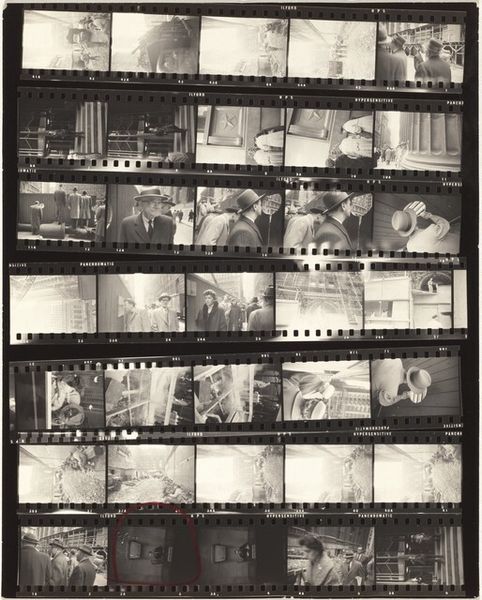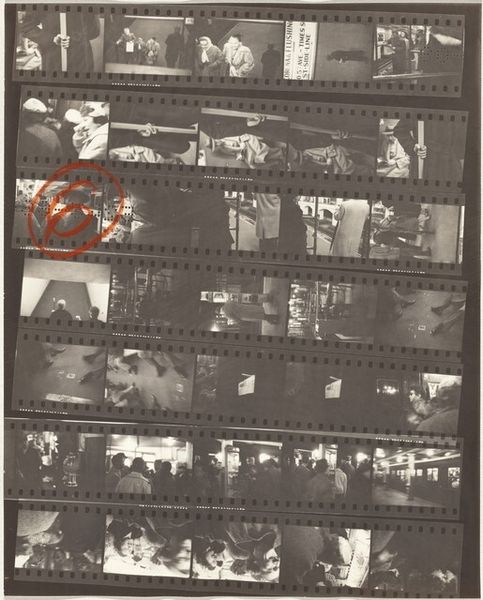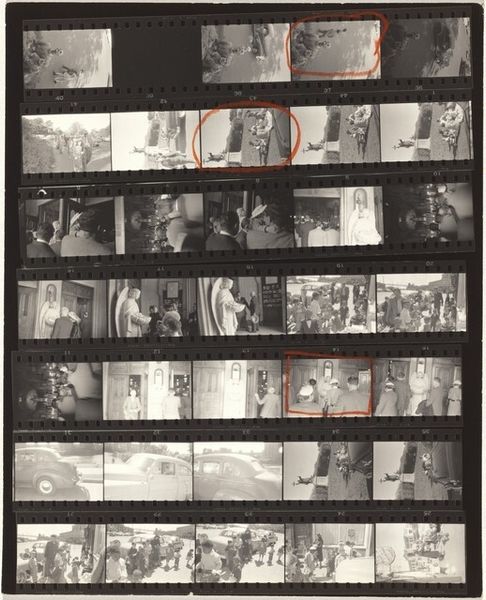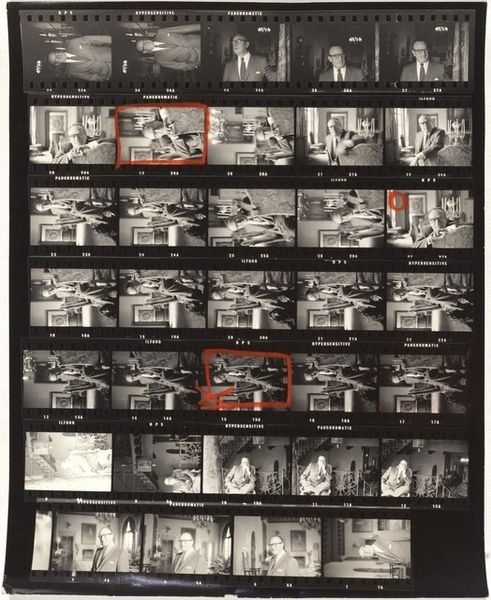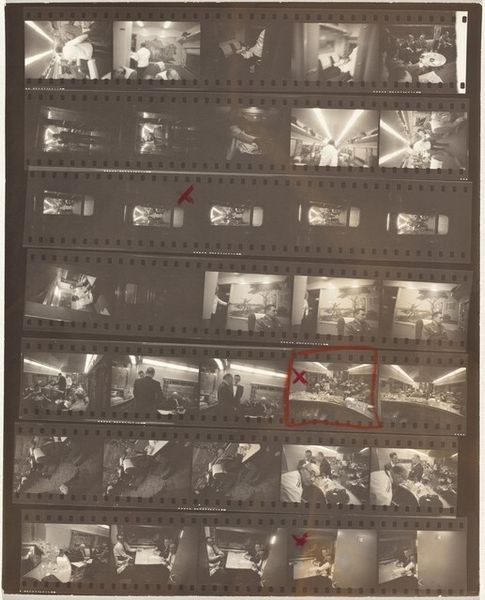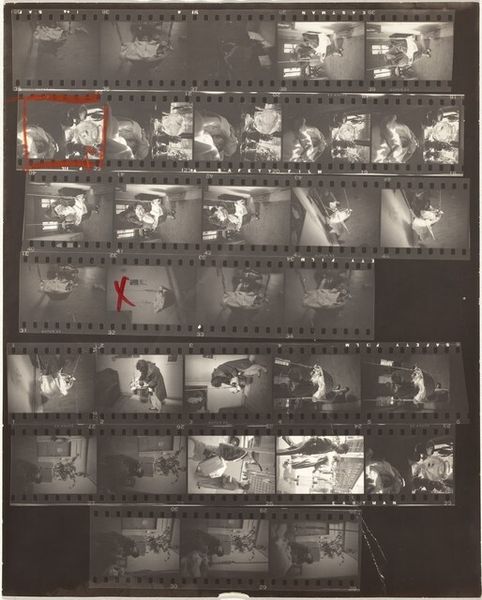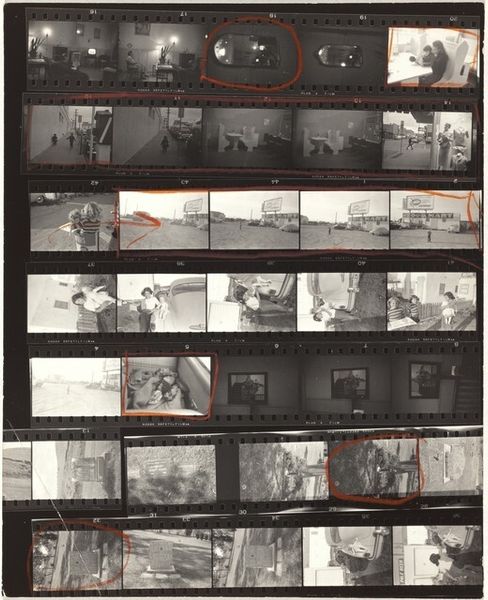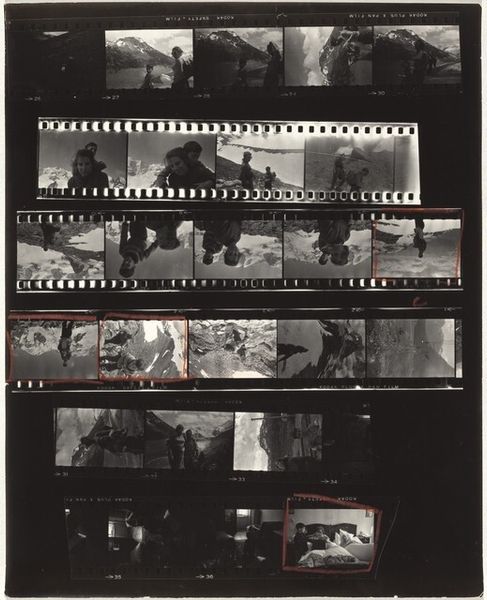
contact-print, photography, gelatin-silver-print
#
film photography
#
contact-print
#
street-photography
#
photography
#
gelatin-silver-print
#
realism
Dimensions: overall: 25.3 x 20.5 cm (9 15/16 x 8 1/16 in.)
Copyright: National Gallery of Art: CC0 1.0
Curator: This is Robert Frank’s “Guggenheim 578--Santa Cruz, California,” a gelatin silver contact print from 1956. It's one of his more unique pieces. What’s your initial read? Editor: There's a certain voyeuristic, almost unsettling quality, don't you think? The contact sheet format gives it an unfinished feel, and seeing snippets of both intimate and public spaces creates an interesting tension. It feels very exposed. Curator: I see that. The contact sheet format absolutely adds to that raw emotionality, pulling the curtain back on his process. The juxtaposition of scenes certainly invites a conversation about the public and private selves, and, by extension, the myth of California itself. We get bedrooms and public spaces where individuals move seemingly unattached to each other. It’s very bleak. Editor: And those fragmented mirror shots are just loaded with symbolic potential! Mirrors often signify self-reflection or fragmented identity. I wonder if Frank intended to explore themes of alienation within a rapidly changing American landscape? Is this an artist grappling with the illusion of the American dream? Curator: Quite possibly. Given the historical context – post-war America, brewing social unrest – the mirror motif also might represent the ways people at the time would have attempted to come to terms with the growing gulf between promise and reality. As he did in so many of his images from The Americans. Even the simple gesture of framing images via the red grease pencil is heavy-handed but makes sense in the larger context. Editor: The annotation suggests he was actively directing the narrative, or maybe trying to control the story the images tell, wrestling meaning from this set of frames. But perhaps by laying bare this process he hopes to suggest an alternative way of living, seeing, and interpreting the dominant paradigms and belief structures. A postmodern deconstruction decades before that was even in fashion. Curator: That sounds like the activist in you talking. Editor: Perhaps. The images and signs speak loudly about what the artist was struggling with when visiting that area of California, so what can I say. Curator: Well, struggling to make meaning is perhaps the most honest of artistic motives. Frank certainly invites us into that process here. Editor: Indeed. It’s a powerful invitation, one that continues to resonate even today.
Comments
No comments
Be the first to comment and join the conversation on the ultimate creative platform.
